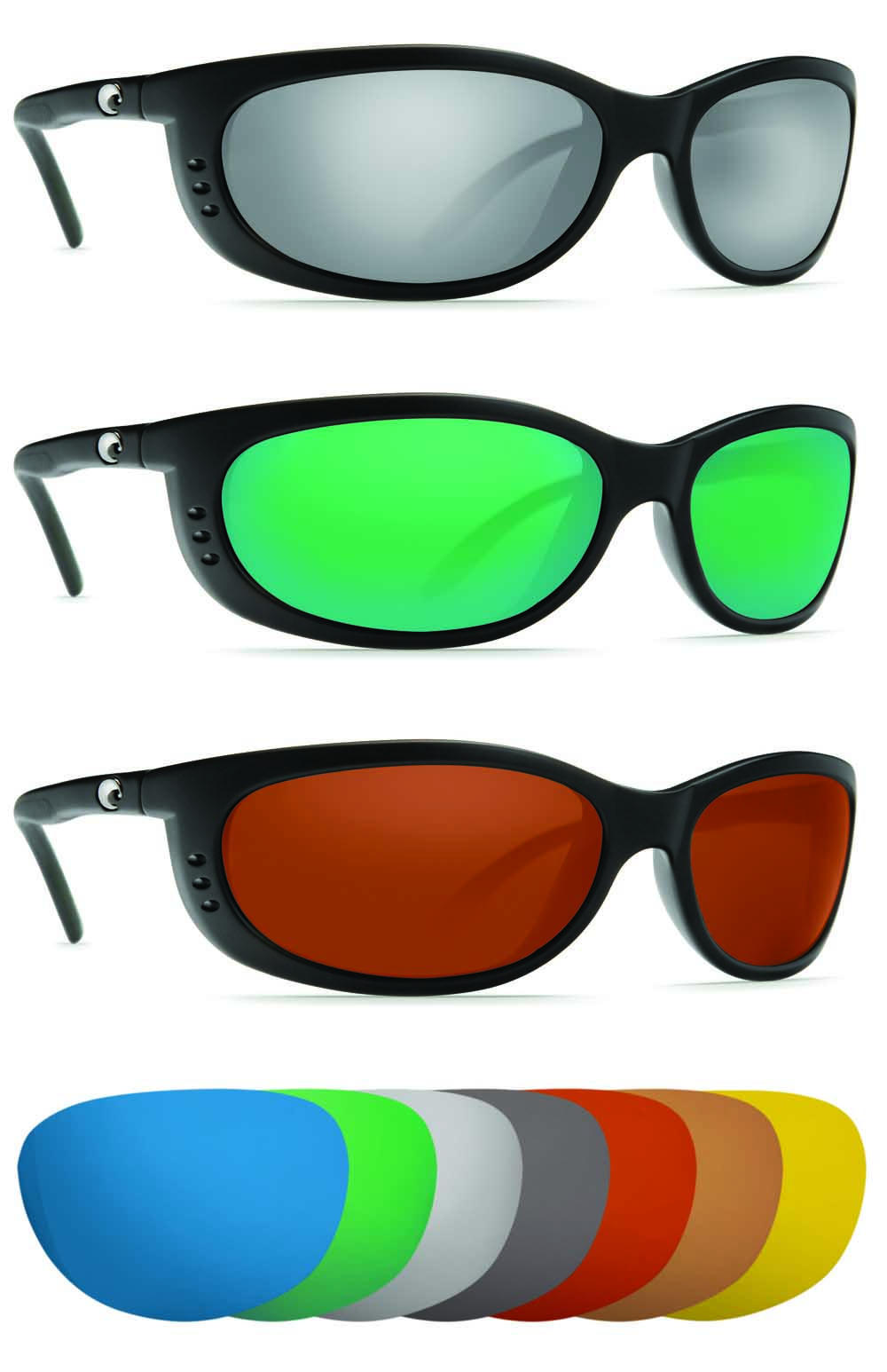Years ago, sight fishing was practiced by only a few pros. Guys like Guido Hibdon and Bobby Garland were among the first and most successful. Through their exploits, the rest of us learned that it was possible to win by looking at fish.
Soon an entire generation of “sight fishermen” followed, and the tactic has become a common practice at every level of competition. Elite Series pros like Shaw Grigsby, Kelly Jordan and Dean Rojas have all won by using this tactic.
My exposure to sight fishing came first in saltwater, fishing the flats along Florida’s Gulf and Atlantic coasts. Through those early experiences I learned something that all advanced sight fishermen eventually come to understand: the importance of quality optics.
While most of today’s anglers wear some type of polarized sunglasses, it’s surprising how many are willing to settle for cheaper optics. Inexpensive shades might reduce glare, but they fall well short in other critical aspects. Things like consistency in the curvature of the lens, clarity, tint and color all have a major impact on the integrity of the sunglasses we choose. Factor in various levels of light and/or water color, and things get even more complicated.
To me, trying to see fish through a cheap pair of polarized sunglasses is like driving a car with a filthy windshield. I don’t know about you, but I want to see where I’m going.
Helping the blind to see
With recent advancements in materials and technology, sunglass manufacturers are now able to provide high grade optics for people with poor eyesight — like me, for instance. I have a strong degree of astigmatism. That means my eyes are abnormally shaped. Without corrective lenses, I can’t see well at any distance. Oddly though, with quality prescription sunglasses, I see fish really well.
Perhaps it’s due to years of on-the-water training, or my background in art. For whatever reason, my eyes are able to separate similar color tones and distinguish subtle movements — even faint shadows of otherwise invisible fish catch my eye. But even a trained eye requires good optics, and for that I rely on a custom optician.
Optics Inc. of North Carolina has customized my sunglasses for years. The company was founded by Harry Allen, an avid bass angler and “visionary” if you will, who realized the need for quality optics in bass fishing back before it was fashionable.

Harry’s company was one of the original custom optical centers to handle prescriptions for Costa Del Mar. Now owned and operated by Chuck Swaim, Optics Inc. continues to serve the needs of Costa Del Mar, among others, particularly for their more complicated prescriptions. They routinely build bi-focal and tri-focal lenses specialized for fishermen, and if requested, they can create a “progressive” lens, so that the transitions aren’t noticeable.
Finding the way
Early on, Harry experimented with various lens colors to achieve maximum visual penetration into the water column. A color we worked on together is called “Sunrise,” which became a favorite in Costa’s product line for years. Harry has since developed another variation he refers to as “The Flats Color,” now popular among inshore saltwater anglers. Costa Del Mar offers a very similar pigment called “Copper.”
Although these custom colors work well for most, not everyone’s eyes are the same. For that reason there are a multitude of lens colors to choose from, and it’s important to figure out which will work best for your eyes under varying light levels.
Generally speaking, lighter lenses are intended for low light levels, darker lenses for brighter light levels. Exceptions sometimes occur when viewing different bottom compositions (sand, gravel, mud), or through various water pigmentations (even ultra-clear water has some color to it).

How your eyes are able to discern subsurface features is very important. Are they able to separate various shades of green for instance, such as the pigmentation of a bass suspended over vegetation? If that bass moves, perhaps. But what if he doesn’t? Separating a fish from his surroundings can be very challenging, even for the most gifted sight fishermen. So increase your odds by wearing high grade optics.
Shop till you drop
So, what are the best lenses for you — dark or light, glass or acrylic? Each has advantages, so consider the following.
While glass lenses offer finer overall clarity, they also weigh more. Acrylic lenses, on the other hand, are lighter and more impact resistant. (If you’ve ever had a worm weight fly back toward you at warp speed, then you know how important this can be.)
Most high-end sunglass makers offer an array of lens colors to choose from. I suggest you try them all to see which will meet your specific needs—on the water would obviously be best.
Another critical decision will be the frame you choose. Because I require a heavy prescription, I try to minimize weight by opting for the lightest frames possible. The Fathom frame by Costa fits great and it’s strong enough to support thicker lenses.
Other things to consider are curvature of the wrap, comfort, and how the frames eliminate extraneous light. Keep in mind that while some frames may be ideal for fishing, they may not be good for driving (trucks or boats). Frames that prevent light penetration from the side will reduce your field of vision dramatically. Peripheral vision is important when driving, less when searching for underwater targets. So choose your frame style accordingly.
An option to consider is aftermarket side shields designed to attach to the frame stems. These work great for reducing extraneous light and can be quickly removed for driving. Plus they’re light, so no real weight is added.
There are a number of high-end sunglass makers in the market, some of whom offer custom prescription lenses. For those that don’t, seek out a custom optician that specializes in polarized lenses, and one that carries the brand of frames you like. Chances are good they can match your prescription to the frames you want. And remember to try as many frame styles and lens colors as possible before buying.
Cost versus feasibility
Affording quality optics isn’t in everyone’s budget. I realize that. But just about every serious angler sets some money aside for fishing equipment. (And if you’re reading this, then it’s a safe bet you’re serious about your fishing.) So it comes down to priorities. What’s more important, a new rod, or a new pair of quality polarized sunglasses?
If sight fishing is part of your routine, or something you want to learn, then high-grade optics are a must. And even if you have no real interest in sight fishing, the ability to see what’s underwater is important to any angler. Whether searching for submerged targets, like stumps, boulders, etc., or simply playing a hooked fish, quality optics will open your eyes to the subsurface environment where fish live, making you a better angler in the process.
So you decide. Are they worth it?





